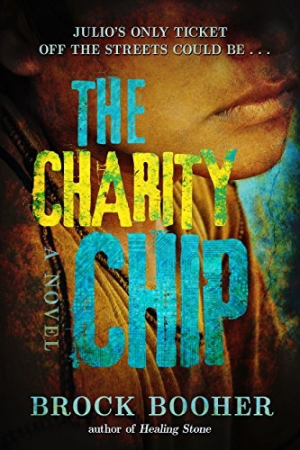The Charity Chip
Poverty, the true costs of charity, and the value of life are all themes compellingly explored in this novel based in Lima.
Fourteen-year-old Julio has found it harder and harder to provide for himself and his twin brother since the advent of implanted money chips a few years ago. People no longer have spare change to give to an orphan juggling fire batons at the traffic light, so the opportunity to be implanted with a chip as part of a charity program seems like a dream come true. In his provocative novel, The Charity Chip, Brock Booher explores themes of poverty, charity, and the value of one life over another in a story layered with suspense, drama, and action.
One of the toughest issues faced by aid organizations is actually getting the money they raise into the hands of the people they want to help. The money chip, a device implanted into one’s hand, appears to be the perfect solution to cutting out the middle man. Isak Blixt, a smooth and confident foreigner, forms a charity that allows children in his program to receive the food, clothing, and education they need while maintaining their independence. What Julio isn’t sure of is what hidden price there may be to accepting Isak’s charity.
Booher, the author of Healing Stone, builds his second novel on an interesting and thought-provoking premise: what happens to people in poverty when the world switches almost exclusively to electronic forms of money transfer? Is it possible to have charity without corruption? He clearly depicts what it’s like for kids to live on the margins in Lima, Peru, quickly building a detailed world ruled by the need to survive with a desperate lack of resources. The smell of roasting chickens combined with the sizzle of fat dripping into the open fire makes Julio’s stomach growl, and the cheers from the stadium where the popular Alianza Lima plays soccer bring back memories of better days with his father. Strong descriptive prose coupled with the intriguing story of a mysterious foreign charity, which may or may not be what it seems, makes for a fast-paced book that will appeal to many readers from middle schoolers to adults.
Reviewed by
Christine Canfield
Disclosure: This article is not an endorsement, but a review. The publisher of this book provided free copies of the book to have their book reviewed by a professional reviewer. No fee was paid by the publisher for this review. Foreword Reviews only recommends books that we love. Foreword Magazine, Inc. is disclosing this in accordance with the Federal Trade Commission’s 16 CFR, Part 255.

